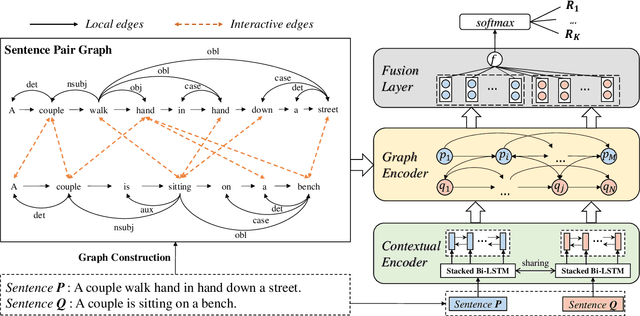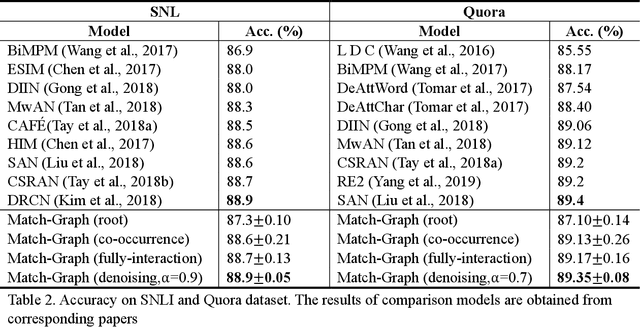Inducing Alignment Structure with Gated Graph Attention Networks for Sentence Matching
Paper and Code
Oct 15, 2020



Sentence matching is a fundamental task of natural language processing with various applications. Most recent approaches adopt attention-based neural models to build word- or phrase-level alignment between two sentences. However, these models usually ignore the inherent structure within the sentences and fail to consider various dependency relationships among text units. To address these issues, this paper proposes a graph-based approach for sentence matching. First, we represent a sentence pair as a graph with several carefully design strategies. We then employ a novel gated graph attention network to encode the constructed graph for sentence matching. Experimental results demonstrate that our method substantially achieves state-of-the-art performance on two datasets across tasks of natural language and paraphrase identification. Further discussions show that our model can learn meaningful graph structure, indicating its superiority on improved interpretability.
 Add to Chrome
Add to Chrome Add to Firefox
Add to Firefox Add to Edge
Add to Edge